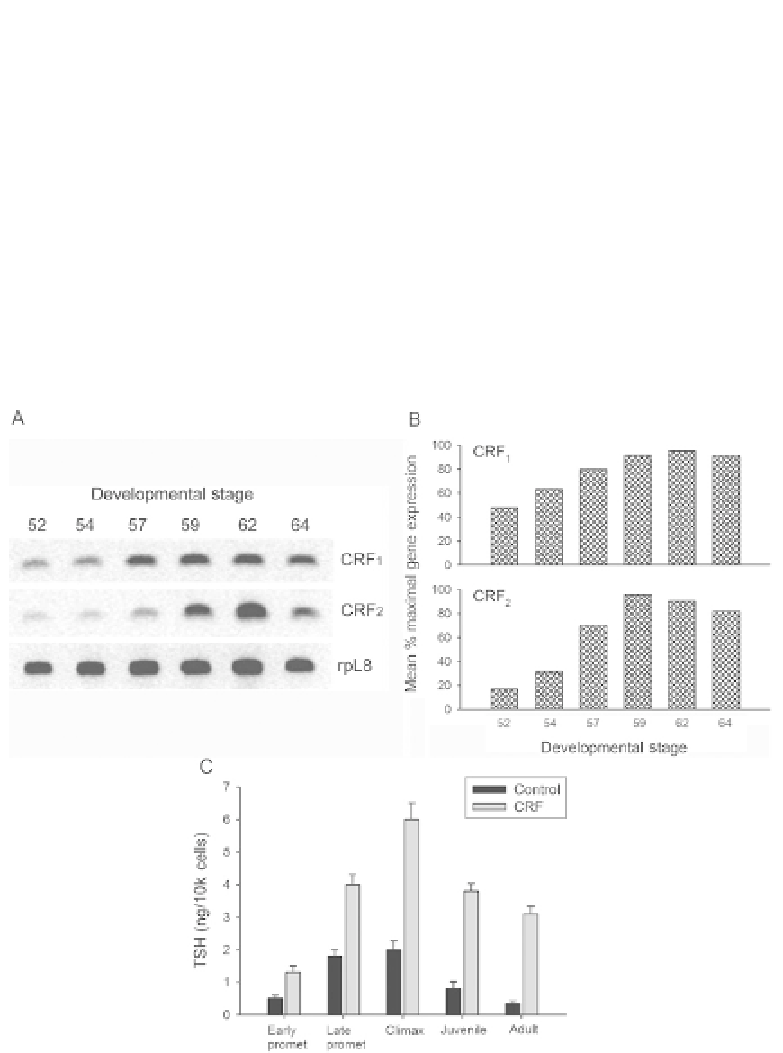Biology Reference
In-Depth Information
a plateau throughmetamorphic climax (
Manzon&Denver, 2004
). In contrast,
mRNA for the
crf
2
was very low during pre- and early prometamorphosis, but
increased dramatically during late prometamorphosis and metamorphic cli-
max. The expression of the
crf
2
in the tadpole pituitary paralleled the increase
in sensitivity of the pituitary to CRF-like peptides during metamorphosis
(
Fig. 7.2
;
Kaneko et al., 2005
). These findings support the hypothesis that
the competence of tadpole pituitary thyrotropes to respond to hypothalamic
CRF depends on the upregulation of the CRF
2
receptor during late
prometamorphosis.
Figure 7.2 Pituitary expression of the corticotropin-releasing factor (CRF) receptor type
1 (CRF
1
) and type 2 (CRF
2
) show distinct patterns during tadpole metamorphosis.
(A) Semiquantitative RT-PCR analysis of crf
1
and crf
2
mRNAs in X. laevis tadpole
pituitary. The rpL8 is a housekeeping gene whose expression did not change during de-
velopment. (B) Quantitation of semiquantitative RT-PCR analysis of crf
1
and crf
2
mRNAs
in X. laevis tadpole pituitary. crf
1
and crf
2
mRNA levels were normalized to rpL8 mRNA
(modified from
Manzon & Denver, 2004
). (C) Thyroid-stimulating hormone (TSH) secre-
tion by dispersed tadpole or frog pituitary cells treated with vehicle or frog CRF (100 nM)
for 24 h. Data were derived from
Kaneko et al. (2005)
, Fig. 4.

